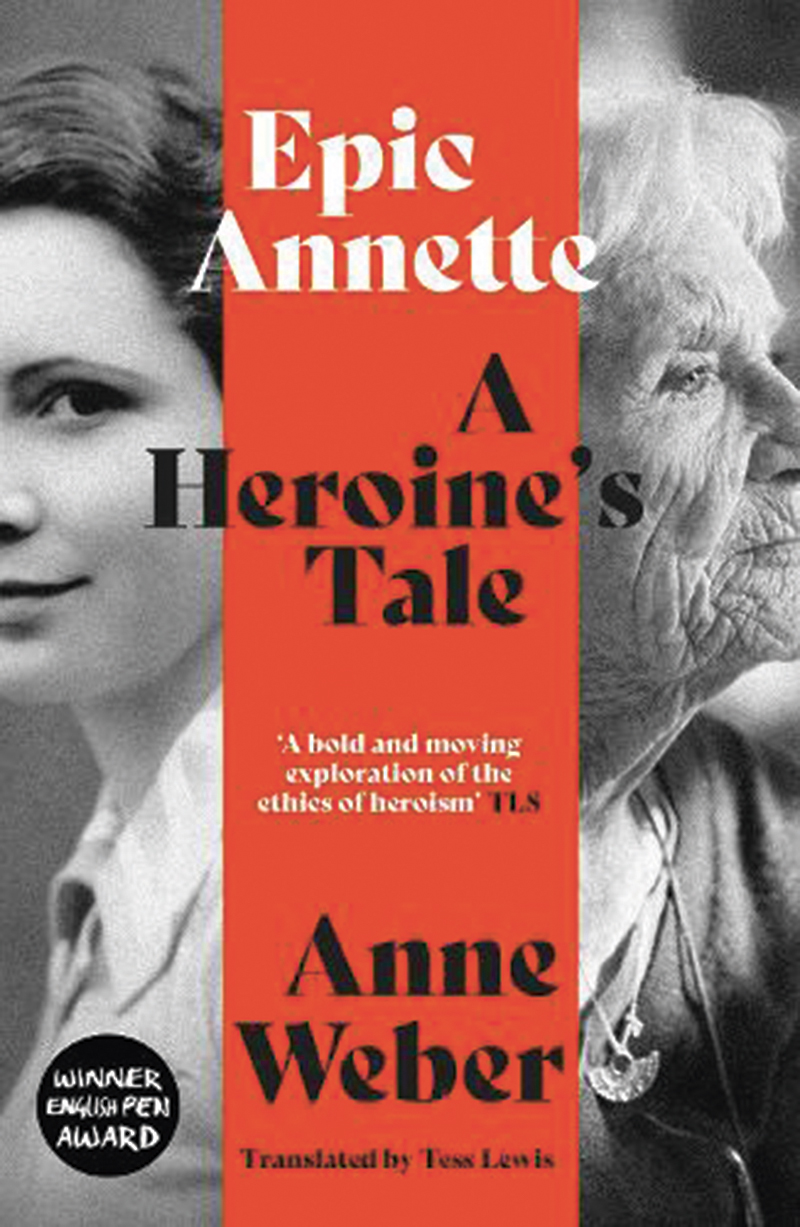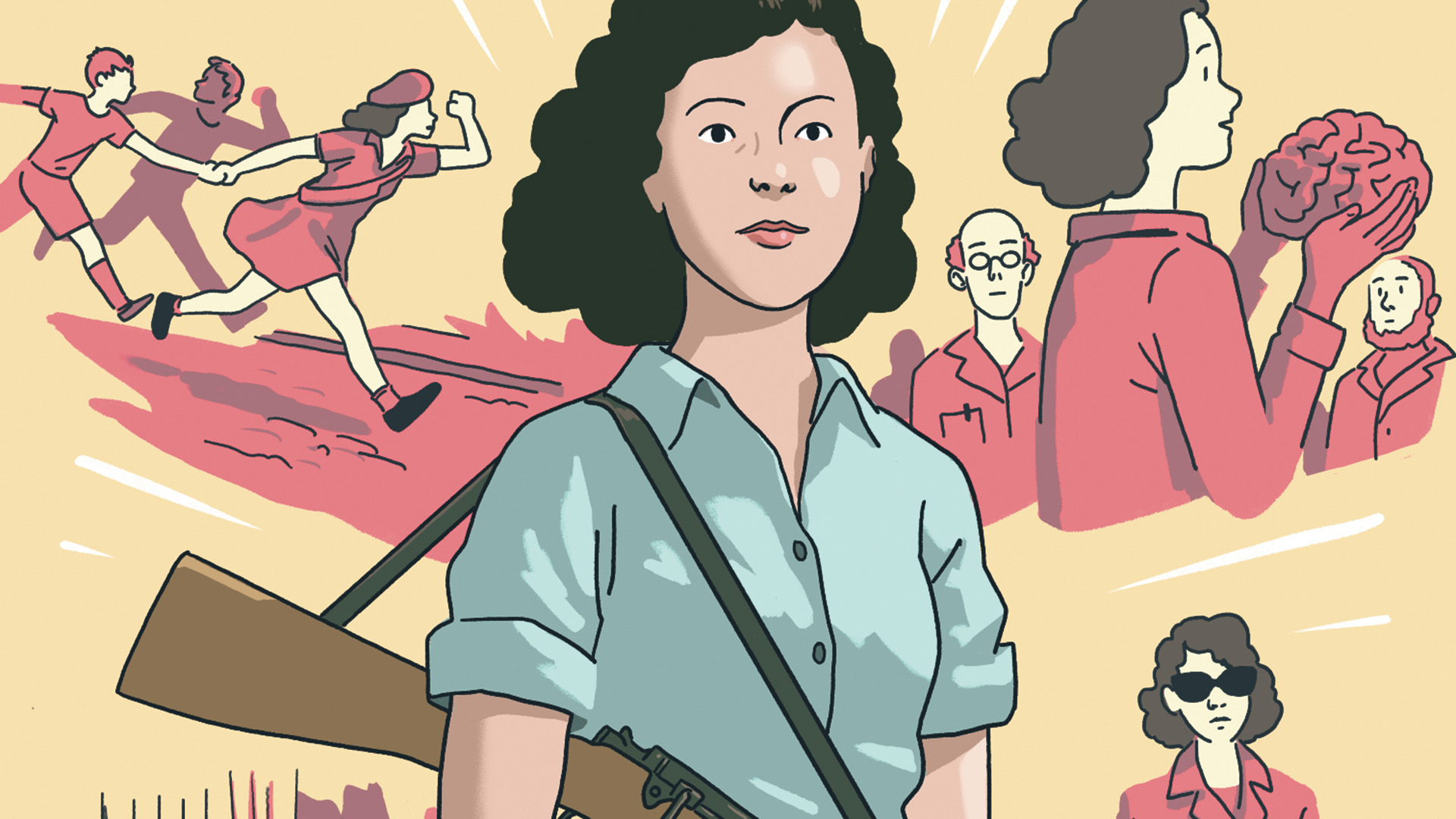I have lived and written in Paris for a long time now. I am of German origin, but I write my books in both languages: German and French. A few years ago, I was invited to the south of France for a panel discussion on National Socialism and its effects on later generations. At the end of our discussion, the floor was opened to the audience and one of those who spoke was a slender, quite elderly woman with snow-white hair and brilliant blue eyes. I immediately took a liking to her, not only because she revealed that, as a young woman, she had been in the resistance – I didn’t know that today you could still meet former resistance fighters completely by chance – but also because of her beauty, her vivacity and everything about her. We spent the rest of the evening together and I learned more about her and her life.
Anne Beaumanoir, called Annette, was born out of wedlock in Brittany in 1923; her parents later married. As a very young woman, she joined the communist resistance against the German occupation. She was first deployed in the underground in Rennes, then in Paris, Lyon and Marseille under various aliases. In Paris, she happened to hear of a Jewish family hiding in a garret in the city, in a neighbourhood where a rafle [raid] was about to take place. Barely 20 years old, Beaumanoir spontaneously set out to find these complete strangers in the hope that she might save them. And, in fact, she was able to bring two adolescents to safety: she first brought them to her own hiding place and then to her parents’ home in the country, where they survived Nazi persecution. An infant was saved the following morning, also through Beaumanoir’s intervention. The two adults hiding in the garret could not be persuaded to leave it: they were deported a few days later and subsequently murdered. Decades later in 1996, Beaumanoir was honoured at Yad Vashem as a Righteous Among the Nations for rescuing these children.
After the war, Beaumanoir studied medicine and became an acclaimed neurophysiologist. She married a doctor in Marseille and bore two children. Then, in 1954, a war started in which Algeria sought to free itself from 130 years of French colonial rule. When Beaumanoir learned that the French military was torturing Algerian prisoners, it was clear to her that she had to rejoin the resistance – this time against the French state. She found the fact that the French military was using the Gestapo’s methods of torture against its prisoners all the more intolerable because this time, as a Frenchwoman, she saw herself as on the side of the oppressors and torturers.
Beaumanoir joined the Algerian freedom movement, the National Liberation Front (FLN). As a “suitcase carrier,” she transported money the FLN collected from Algerians living in France to finance its struggle. Annette organised hiding places and worked as a courier. In 1959, she was captured in southern France and sentenced to 10 years imprisonment in a French military court. She made an adventurous escape and left France but had to leave her (now three) children and husband behind. Starting in 1962, as part of the first independent Algerian government, she worked on rebuilding the national health care system until she had to flee Algeria in 1965 following a coup.

When I met Beaumanoir, she was 94 and still very active. She often visited schools to tell children about the resistance and civil disobedience. She was still as acutely outraged about injustice and racism as she had ever been. At some point it became clear to me: I wanted to devote a book to her. But how could it work? How do you make literature out of a living person’s story? Because I’m a writer and not a biographer, I am not required to be objective – on the contrary. Isn’t literature, like all art, a form of radical subjectivity? I didn’t want to add any fictional elements. And why should I: isn’t her life adventurous enough? But I also didn’t want to act as if I had a lease on the truth about this woman.
At some point it occurred to me that there is a literary form in which the great deeds of heroes – until now, not of heroines – had been recounted or, rather, sung: the epic. I decided to bring Beaumanoir’s life into a rhythm that would carry me and later the reader as well, not in a rigid meter, but in a variable, progressively less distinct rhythmic movement. Beaumanoir is not a woman who has received any recognition in her country. She is no official heroine. I wanted as many people as possible to learn about her.









